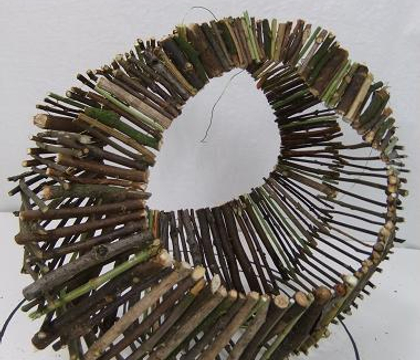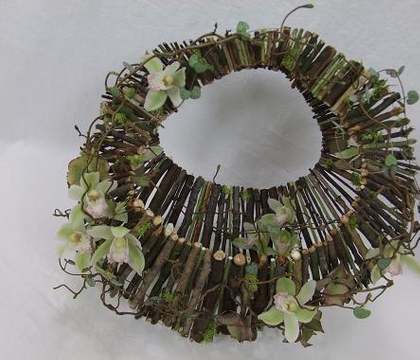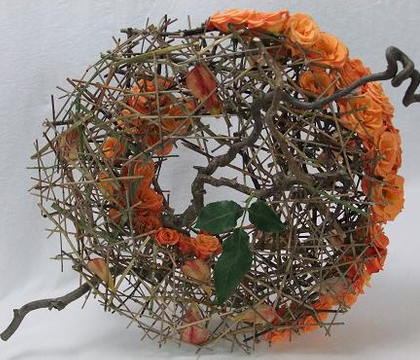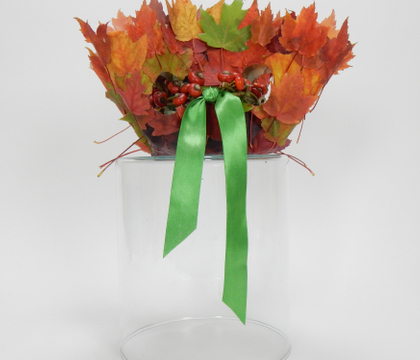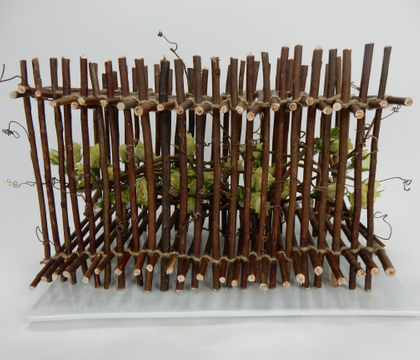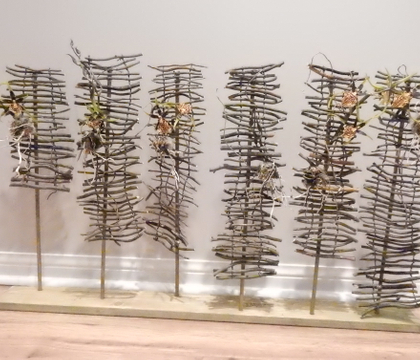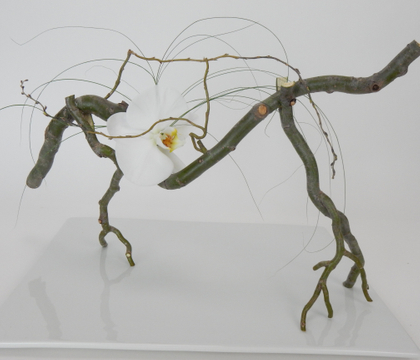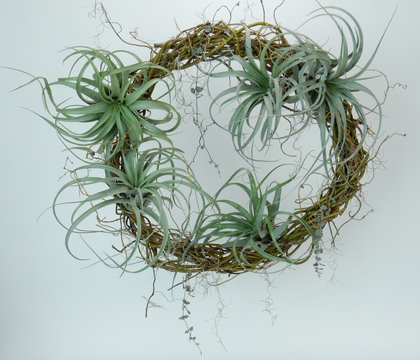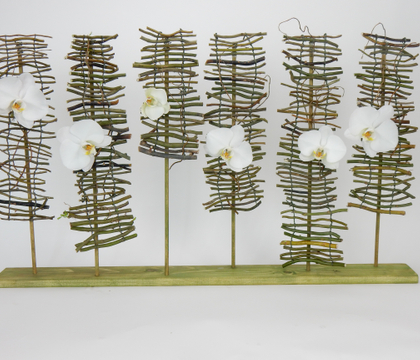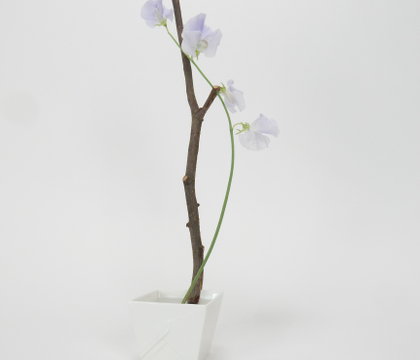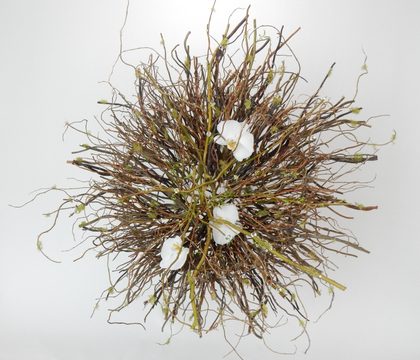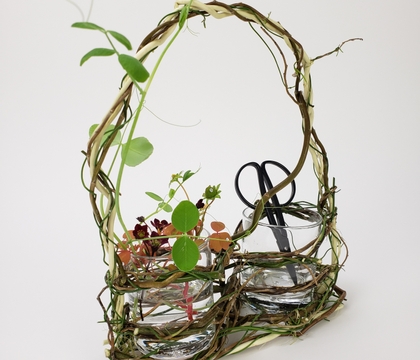Christine de Beer - effortless floral craftsman
Designing Your Way to Profits
- 5 January 2012
- click to send Christine a smile
Floral Craftsmanship Article
in the January/February 2012 Issue of
Canadian Florist Magazine
In a challenging retail environment, one of the first instincts business owners have is to cut costs. While this is certainly an effective way to balance the books, we in the floral industry are artists who sell products based on our creative talent. We have to ensure that any cost-cutting measures we take don’t affect the quality of product we put out. We have a distinct advantage of being a naturally creative and innovative community. By focusing on design skills and floral craftsmanship, we can in fact increase our profitability in challenging times.
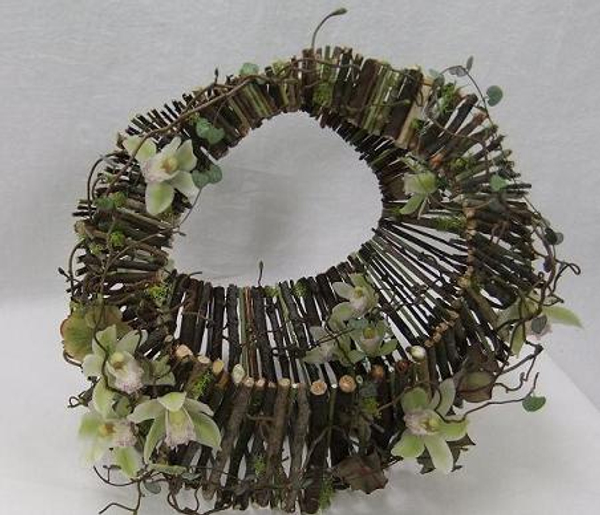
A few years ago, I started to create rather large and elaborate designs for floral art competitions, demonstrations and shows. Cost was always a limiting factor. Each arrangement had a budget down to the last twig. Unfortunately, the more I tried to control the cost of the designs, the more it kept on creeping higher and higher. Then somewhere on this journey, my focus shifted.
It became more important to create a better design than the one before. Paying attention to the quality of work, craftsmanship and art somehow reduced the claim on my resources. Profitability increased without deliberately cutting costs. This was surprising, but my research revealed, not unique. Focusing on craftsmanship and creating quality has been proven to increase profitability. Take this quote from W. Edward Deming, an American statistician, professor, author and consultant who worked with businesses, from 1950 and onward, to improve product quality, design and service: “When people and organizations focus primarily on quality, quality tends to increase and costs fall over time. However, when people and organizations focus primarily on costs, costs tend to rise and quality declines over time.”
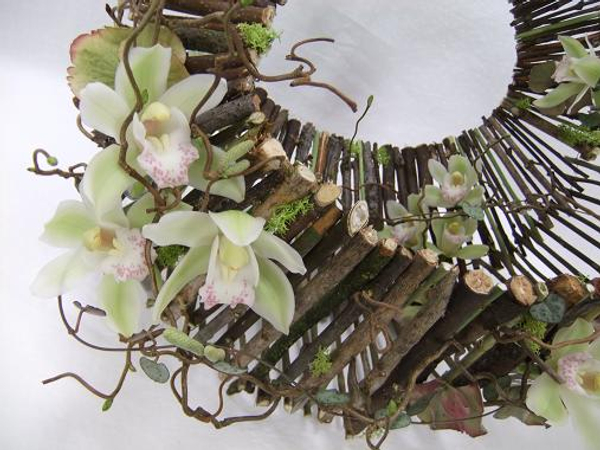
Understanding this relationship between quality and cost can help florists weather the toughest of economic climates, and it all starts with knowing what our customers value.
When purchasing flowers, most people are not actually buying flowers; they are acquiring beauty, a message, memory, wish or feeling. The value is in what the flowers represent – not the flowers themselves. Craftsmanship is the bridge between emotion and flowers, and the difference between selling once to a customer and starting a connection with a lifelong client.
Improving craftsmanship is an ongoing journey, but it pays to have a good look at the fundamentals, which I’ve outlined below:
Use only the best...everything: Choose the best of whatever you are using, from the flowers themselves to equipment and everything in between. Build a toolbox you can be proud of. Some of the items in there will be expensive and some not so much, but if they suit your needs it makes them the best. You can struggle for hours trying to wire a construction or you can reach into your toolbox and know your pliers will get the job done in no time.
Condition, condition, condition:
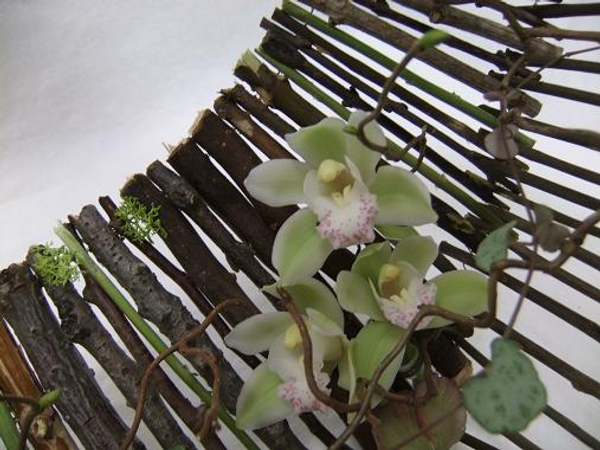
Clients will remember flowers that last long after the memory of cost has faded. Proper conditioning can significantly extend the life of your flowers. Remember, conditioning is not a technique to breathe new life into dying flowers. Conditioning is an act of respect for the quality of flower you start with.
Also, take the time to share your conditioning process with your clients. Educate them on recognizing quality. A small packet of flower food supplied with the purchase is worth more when presented as part of a story about quality and care.
Reduce waste: I am not just talking about your design room waste but also energy and time wasters. Trying to hide a design mistake by covering it up is expensive, and so is trying to make a plan at the last minute. It pays to take a deep breath, stand back, and take a fresh look at the task at hand. Is the value and quality offered to your client still the same? Take the time to prepare better and spend a little more to design your mechanics and calculate the raw materials. It will be significantly less frustrating than spending the time to “make do.”
Practise: Like any art form, floristry needs practice. The pianist does not practise at a recital. The recital is a culmination of hours of practice. Similarly, the dedicated florist will actively seek opportunities to practise and hone skills.
Focus on the quality of your craft: You will become more efficient and your profitability will increase. Good craftsmanship is always recognized as valuable.
Remain curious and be ready for inspiration: Studying design skills and craftsmanship is an ongoing process. It is how you make sure you are ready to design that challenging, gravity-defying inspirational concept when the idea hits. A good place to start is to broaden your skill base. Learn to weave, discover how to tie a great sailor’s knot, find out how to fashion a grasshopper from a palm leaf or hand-write “love” in an elaborately beautiful script. You never know when you might need it to impress an important client. Even if you are an experienced florist you should still enrol in all the study courses you can. Sometimes the value is in the learning and sometimes it is in making new flower friends. Curiosity will always leave you inspired.
Value your own signature style and reputation:
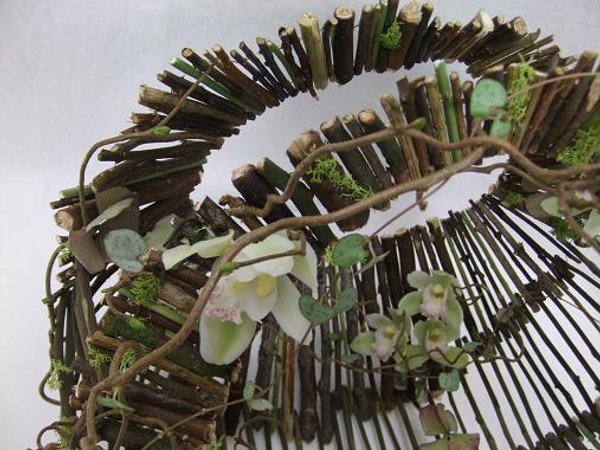
In the modern-day mass market world, people want to be noticed and seen as individuals. Build your reputation and use your inspiration to inspire your clients, as individuals. The value and quality of your reputation is not in being everything to everyone.
In fact, it is quite the opposite. Find, develop and expand on a distinctive and unmistakable signature style by drawing on your own unique background and experiences. Then stay true to your signature style with which your clients can identify and express themselves.
Add a magic ingredient: Actively look for ways to add a magic ingredient. It is that element in a design so subtle that it may even go unnoticed at first, and then the client asks, “What is that?” or “How did you do that?” or my favourite compliment of all: ”How did you think of that?” These are the moments of magic you can use to start a conversation and make a lasting connection with your clients. They will, in turn, take that magic with them to share it with their friends, families and loved ones.
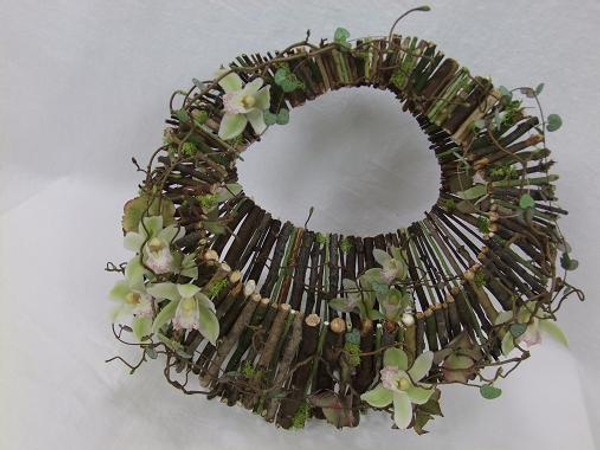
Improve your skill set. Study your craft. Focus on the execution. Don’t compromise on value; even better, create added value by adding a bit of yourself to your designs.
Share your journey with your clients. Let them know what you have learned, what you are learning and what you intend to learn next. It is natural to want to cut costs in a troubled economy, but as a florist, you have so many more effective ways of improving profitability. Focus on craftsmanship and your clients will reward you with sustained business.
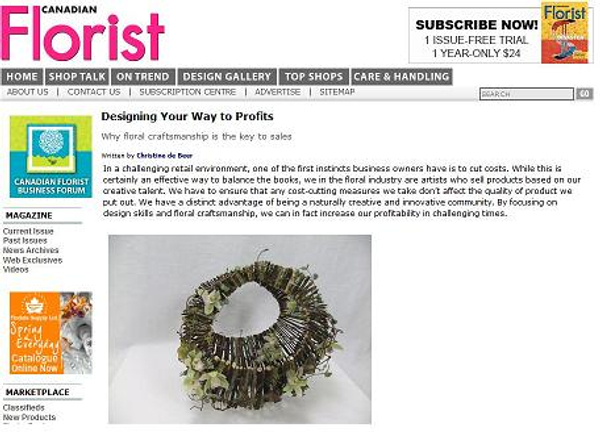
Thank you Canadian Florist Magazine for inviting me to be part of your January/February issue. It is an inspirational resource for all Florists. Have a look at the online magazine.
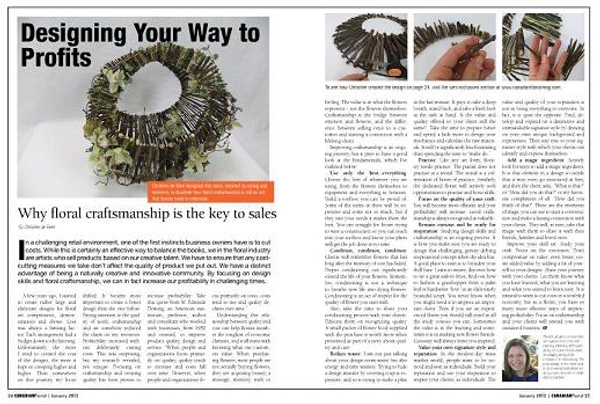
My article in the Canadian Florist Magazine
Sign up for my weekly newsletter
Every week I add a new design with related tutorials. Be sure to subscribe to receive an email notification with design inspiration.
Tutorials
Related Designs
Easy to assemble fall leaf and tissue paper gift bag
My article and a floral parasol design featured in DIY Weddings Magazine
My contemporary floral art design demonstrated at the Canada Blooms flower show in Toronto.
A tiny carry basket to gather the shortest stems from your cutting garden... with a place for water and your cutters.
